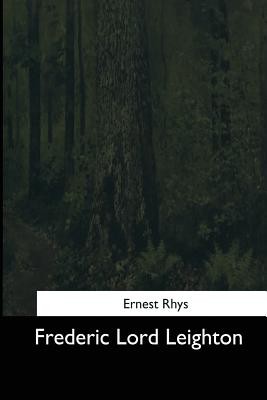
- We will send in 10–14 business days.
- Author: Rhys
- Publisher: CreateSpace Independent Publishing Platform
- Year: 2017
- Pages: 122
- ISBN-10: 1544622287
- ISBN-13: 9781544622286
- Format: 15.2 x 22.9 x 0.7 cm, minkšti viršeliai
- Language: English
- SAVE -10% with code: EXTRA
Reviews
Description
To Italy, at whose liberal well-head English Art has so often renewed itself, we turn naturally for an opening to this chronicle of a great English artist's career. Frederic Leighton was the painter of our time who strove hardest to keep alive an Italian ideal of beauty in London; therefore it is in Italy, the Italy of Raphael and Angelo and his favourite Giotteschi, that we must seek the true beginnings of his art. London made its first acquaintance with him and his painting in 1855, when the picture, Cimabue's Madonna carried in Procession through the Streets of Florence, startled the Royal Academy, and proved that a 'prentice work could be in its way something of a masterpiece. This picture, the work of an unknown young artist of twenty-five, painted chiefly in Rome, showed at once a new force and a new quality, and in its singular feeling for certain of the archaic Italian schools, showed, too, where for the moment the sympathies of the painter really lay. How far the potentiality disclosed in it was developed during the forty years following, how far the ideals in art, which it seemed to declare, were pursued or departed from, the Royal Academy year by year is witness. Here, before we turn to consider the history of those later years, we shall find it interesting to use this first picture as an index to that period of probation, which is so often the most interesting part of an artist's history. In accounting for it, and finding out the determining experiences of the artist's pupilage, we shall account, also, for much that came after. Although Frankfort and Paris play their part, the formative influences of that early period, we shall find, carry us chiefly, and again and again, into Italy.
- Author: Rhys
- Publisher: CreateSpace Independent Publishing Platform
- Year: 2017
- Pages: 122
- ISBN-10: 1544622287
- ISBN-13: 9781544622286
- Format: 15.2 x 22.9 x 0.7 cm, minkšti viršeliai
- Language: English English
To Italy, at whose liberal well-head English Art has so often renewed itself, we turn naturally for an opening to this chronicle of a great English artist's career. Frederic Leighton was the painter of our time who strove hardest to keep alive an Italian ideal of beauty in London; therefore it is in Italy, the Italy of Raphael and Angelo and his favourite Giotteschi, that we must seek the true beginnings of his art. London made its first acquaintance with him and his painting in 1855, when the picture, Cimabue's Madonna carried in Procession through the Streets of Florence, startled the Royal Academy, and proved that a 'prentice work could be in its way something of a masterpiece. This picture, the work of an unknown young artist of twenty-five, painted chiefly in Rome, showed at once a new force and a new quality, and in its singular feeling for certain of the archaic Italian schools, showed, too, where for the moment the sympathies of the painter really lay. How far the potentiality disclosed in it was developed during the forty years following, how far the ideals in art, which it seemed to declare, were pursued or departed from, the Royal Academy year by year is witness. Here, before we turn to consider the history of those later years, we shall find it interesting to use this first picture as an index to that period of probation, which is so often the most interesting part of an artist's history. In accounting for it, and finding out the determining experiences of the artist's pupilage, we shall account, also, for much that came after. Although Frankfort and Paris play their part, the formative influences of that early period, we shall find, carry us chiefly, and again and again, into Italy.


Reviews